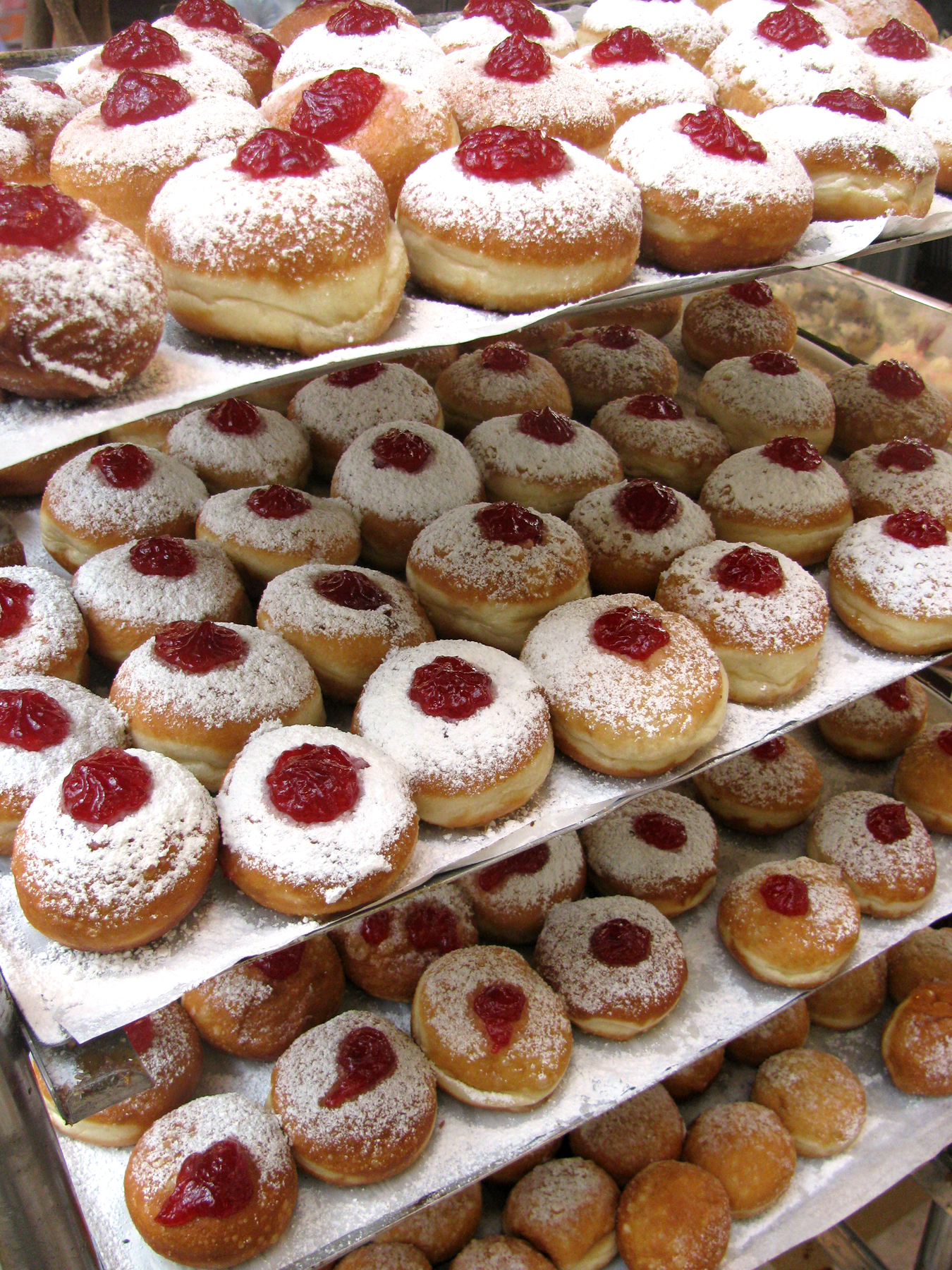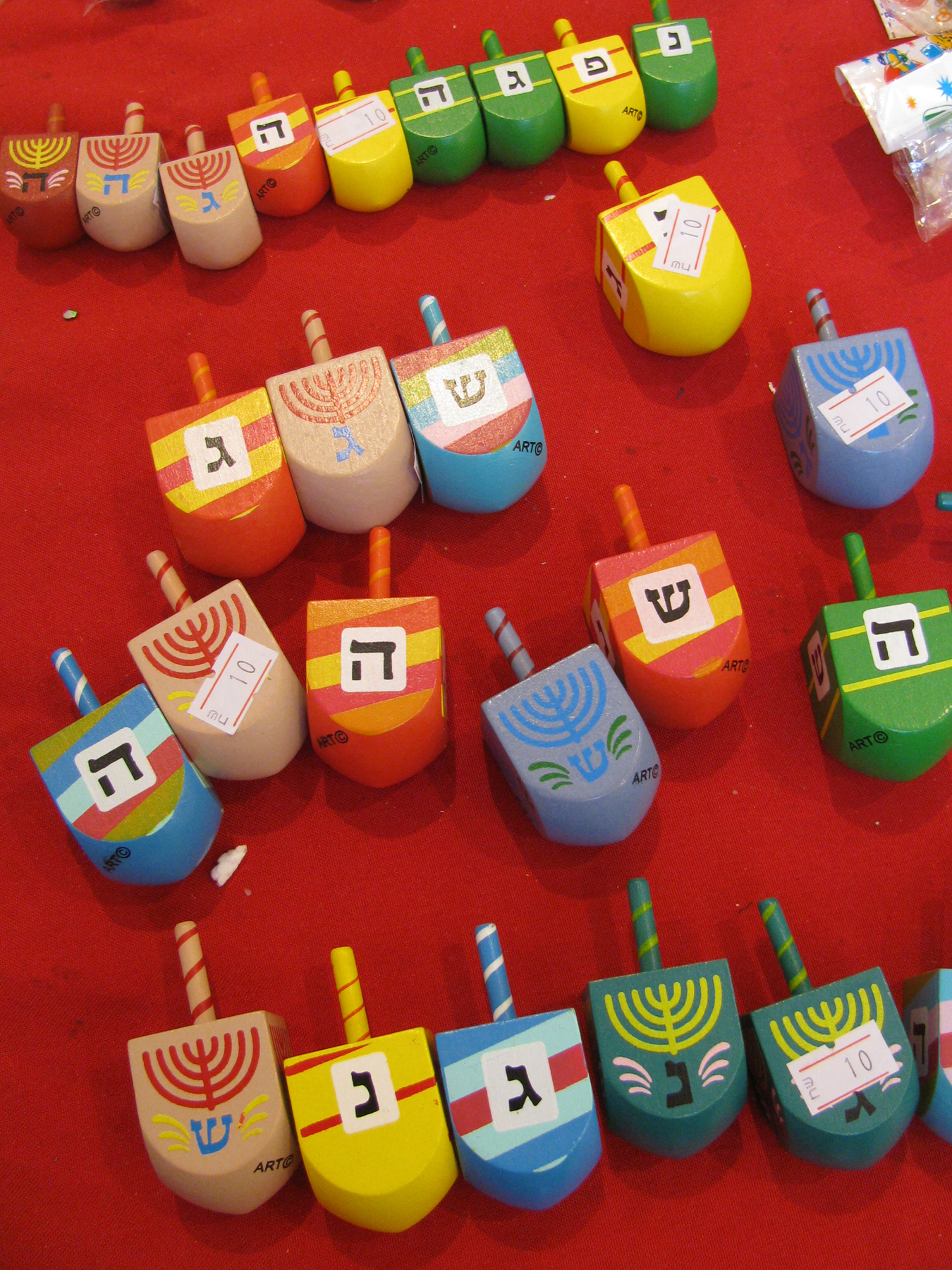HANUKKAH
Israel
I know that in many parts of the world folk are winding down for Christmas but it's a very different story here in Israel. We Celebrated Hanukkah, the Jewish Festival of Lights, last week with candle lighting, presents and yummy fried food. Now we are back to routine and life has returned to normal. No frantic shopping for us or huge meals to cook. Well actually, Jewish people tend to make huge meals every single week - for the Sabbath meals - so the cooking meals part doesn't count!
Hanukkah is celebrated for eight days and marks the victory of a group of Jews called the Maccabees over the Syrian Greeks, the most powerful army of the ancient world. At the end of a three year war the Maccabees recaptured Jerusalem and lit the seven-branched candelabrum, the Menorah, in the rededicated Holy Temple.
Nowadays Hanukkah is celebrated by lighting one additional candle on the Hanukkah (an eight-branched candelabrum similar in stlye to the one in the temple) each day to remind us of a great miracle that happened long ago. After the Maccabees defeated the Syrians and chased them out of Jerusalem, the Jews wanted to light the Temple Menorah again but there was one problem; there was only enough oil in the Temple to last for one night, yet it continued to burn for a full eight days, the length of time it took to press, prepare and consecrate the fresh olive oil.
When we light the Menorah and sing the traditional Maoz Tzur (Rock of Ages) song it is to remember this miracle.
 |
| Latkes |
 |
| Sufganiyot |
Because Hanukkah celebrates the miracle of oil, it is traditional to eat fried foods such as latkes and sufganiyot during the Holiday. Latkes are pancakes made out of potatoes and onions which are fried in oil. Sufganiyot are jam filled donuts that are fried and dusted with confectioners' sugar.
As a part of the Hanukkah tradition, we also play a game using a dreidel. The dreidel is a four-sided spinning top with a different Hebrew letter on each side. The four letters which appear on the four sides of the dreidel allude to the miracle of Hanukkah. They spell out: Nes (N-miracle), Gadol (G-great), Haya (H-happened) and Po (P-here, meaning in Israel). "A great miracle happened here". Outside of Israel, the letter Shin (S- there) replaces the Po (P-here).
All these traditions give significant meaning and importance to the festival, and add a little weight on the scales too!
Happy Holidays and best wishes from Israel,
Lisa
by Lisa of handmadeinisrael
follow Lisa on her blog @ http://lisa-handmadeinisrael.blogspot.co.il/


Thanks for posting this!
ReplyDeleteThose Sufganiyot sure look good! Nice overview, I learned a few things.
ReplyDeleteSo interesting to hear about different countries traditions, I like the deiedel!
ReplyDeleteThanks for giving some insight Lisa. Great pictures too!
ReplyDelete